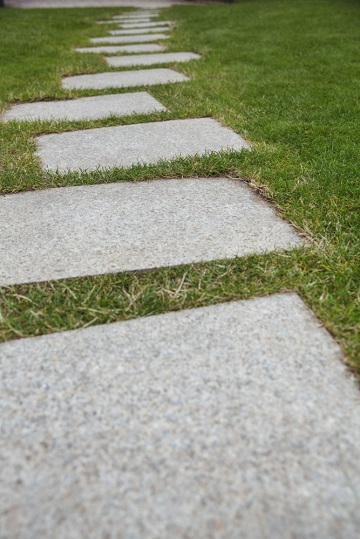 In the most worked cases, the rockery has unevenness with a steep slope. This type of garden is found mainly in botanical gardens and specialized parks. If you have enough budget at home, it is possible to create similar environments.
In the most worked cases, the rockery has unevenness with a steep slope. This type of garden is found mainly in botanical gardens and specialized parks. If you have enough budget at home, it is possible to create similar environments.
A variant consists of leaving aside unevenness and slopes and using stones and rocks to surround certain plants. Stunning designs can be achieved, and exceptional specimens can be highlighted regardless of gender, appearance, size, or other characteristics.
Stones on paths and next to fountains and water courses
The extensive gardens allow the possibility of creating paths and paths to travel through them. They are a decorative resource that “invites” you to walk among the plants and experience visiting the garden differently. In addition, they better protect the grass, which will not need to be stepped on.
These paths and paths can be made of different materials, but one of the most practical options is making them gravel, gravel, or small boulders. Stone of different colors is sold in the market, which allows the person in charge of decoration to choose the one they like the most and personalize that space. With two or more colors, drawings or motifs can be formed that decorate the path. There are also container meshes on the market that are installed on the ground, are hidden from view, and prevent stones from being scattered or mixed due to footsteps.
Another place where stones generate a beautiful effect is next to fountains, ponds, and water courses. Furthermore, in many cases, the rocks themselves, besides decorating, hide the pipes and other parts of the plumbing mechanism. On the other hand, on clear days, the shine of sunlight on the water and its reflection on the stones make them look fabulous. And, of course, rocks submerged below the surface also look great. There are products to treat and give them a shiny, wet-effect finish.
Luminous stones and natural stones
Luminous stones provide an original decoration for the garden. They are artificial stones painted with an acrylic coating that absorbs sunlight during the day and glows in the dark at night. Acrylic paint is resistant to wear and tear caused by water and air.
But if what you are looking for when decorating the garden has nothing to do with “special effects” such as those provided by luminous stones, it is advisable to resort to the simple natural value of the rocks. In this case, the fact that the chosen stones do not have as much brightness or color combinations or that their sizes are not uniform remains in the background. The important thing will be that they are natural stones, which will contribute to creating an environment of rest and balance. And that may be enough: another form of decoration.
What are garden aggregates?
Sand, gravel, boulders, large stones to delimit areas, etc. Garden aggregates are elements that come from various rocks and are used in different ways in gardening and landscaping.
There is an excellent variety of shapes and colors, so choosing the most suitable aggregate is challenging. It is also essential to consider other issues such as the traffic where you want to place it or whether combining different stones in all garden spaces is possible.
There is a wide variety of aggregates for the garden that are distinguished by their color, texture, shape, and granulometry, that is, the size of the pieces.
In addition to the aesthetic characteristics they may present when choosing aggregates, other criteria must be considered. Whether it is easy to walk through them or not, if they withstand the passage of vehicles, if the areas to be covered are vast, or if we need to border a path, for example. All these questions are essential.
